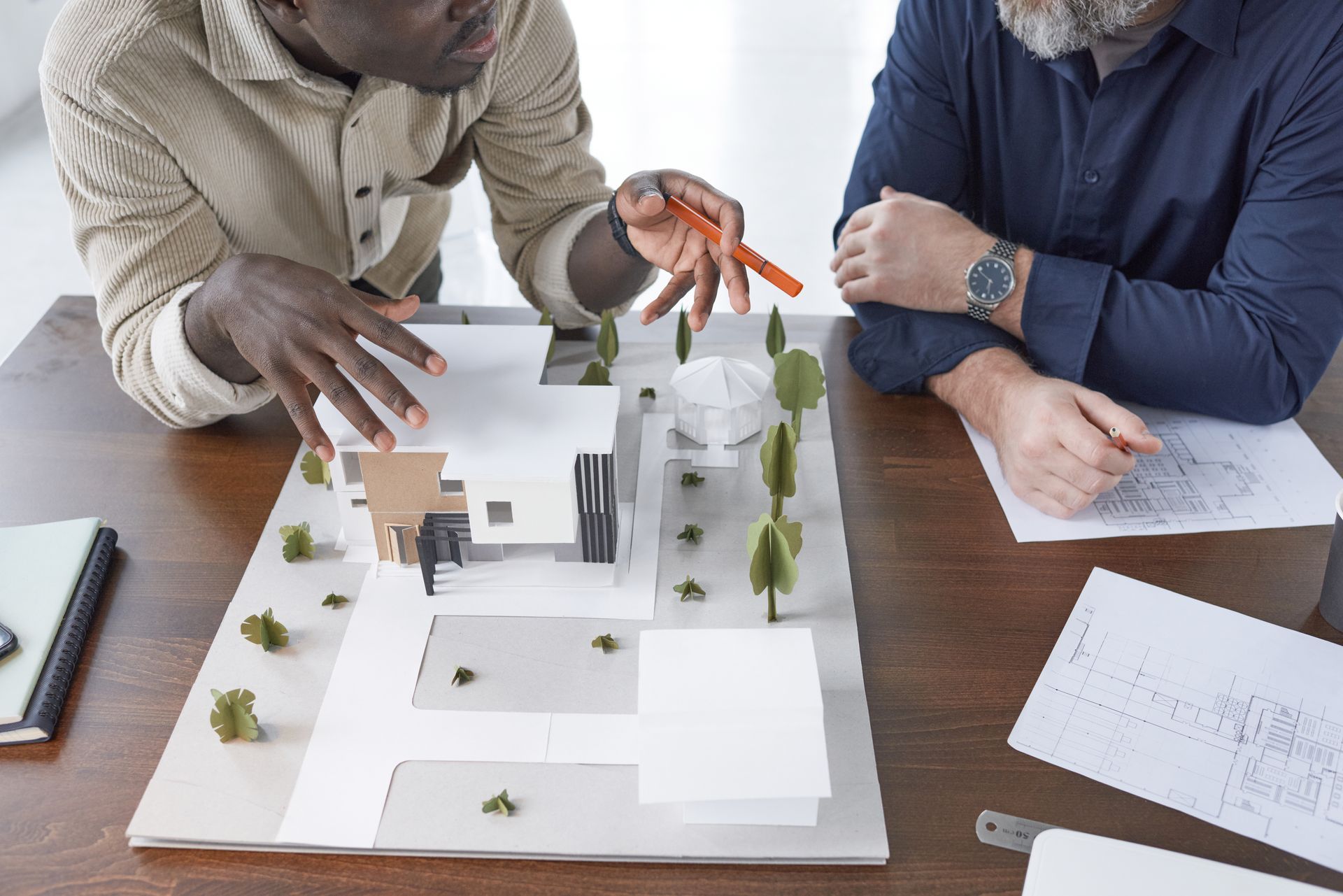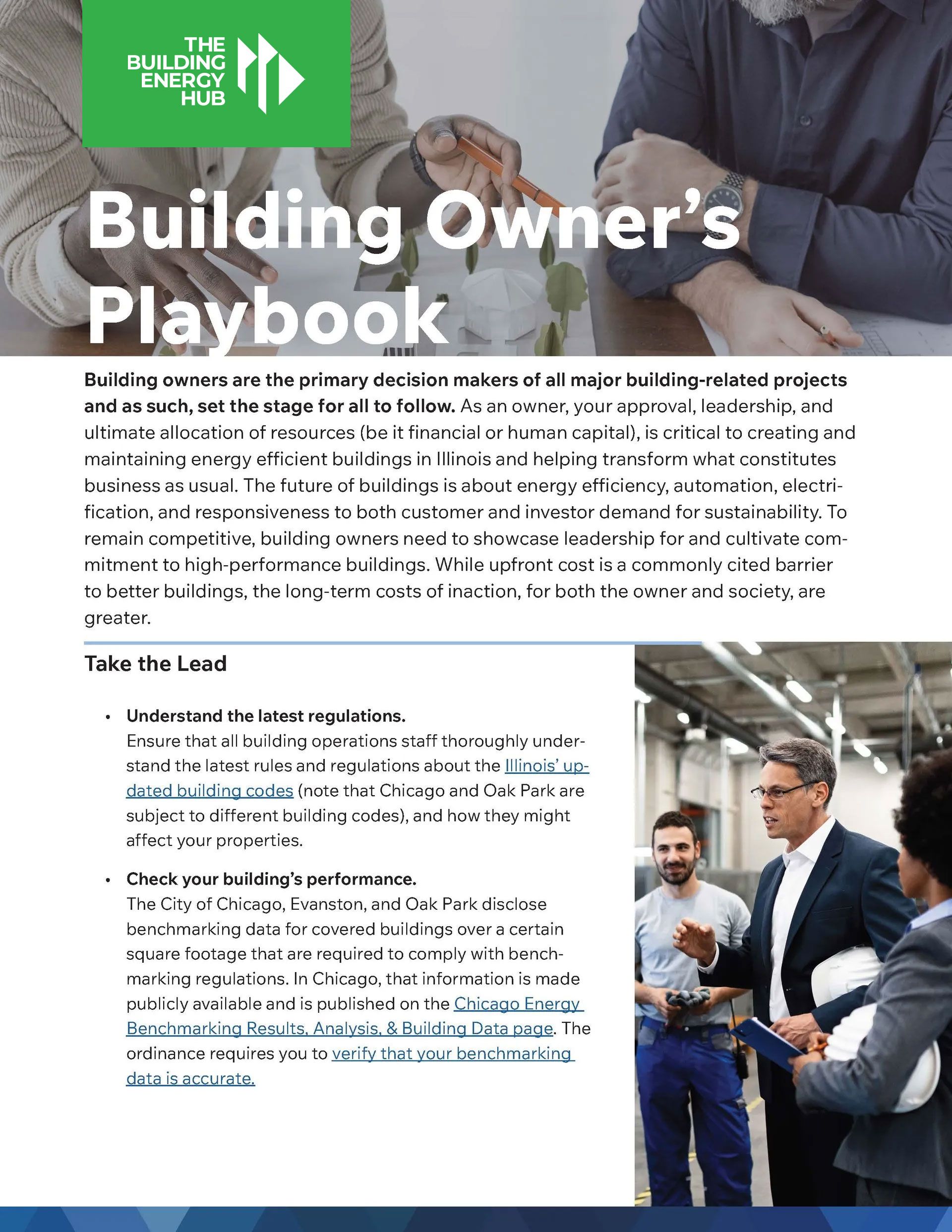Building Owner's Playbook
Building owners are the primary decision makers of all major building-related projects and as such, set the stage for all to follow.
As an owner, your approval, leadership, and ultimate allocation of resources (be it financial or human capital), is critical to creating and maintaining energy efficient buildings in Illinois and helping transform what constitutes business as usual.
The future of buildings is about energy efficiency, automation, electrification, and responsiveness to both customer and investor demand for sustainability. To remain competitive, building owners need to showcase leadership for and cultivate commitment to high-performance buildings.
While upfront cost is a commonly cited barrier to better buildings, the long-term costs of inaction, for both the owner and society, are greater.
Take the Lead
Understand the latest regulations.
- Ensure that all building operations staff thoroughly understand the latest rules and regulations about the Illinois’ updated building codes (note that Chicago and Oak Park are subject to different building codes), and how they might affect your properties.
Check your building’s performance.
- The City of Chicago, Evanston, and Oak Park disclose benchmarking data for covered buildings over a certain square footage that are required to comply with benchmarking regulations. In Chicago, that information is made publicly available and is published on the Chicago Energy Benchmarking Results, Analysis, & Building Data page. The ordinance requires you to verify that your benchmarking data is accurate.

Understand how your building is performing against your peers.
- Through publicly accessible data, you can compare your energy usage to buildings of a similar size and use type.
- Compare your building’s ENERGY STAR score to neighboring buildings by searching the published Energy Benchmarking Data Portal on the City’s website.
- Understand your ENERGY STAR score to see how you are performing against the national equivalents for your building.
Talk to your on-site staff.
- Having a dialog with your building engineer, property manager, and/or facility manager will enable you to get a full picture about how your building is performing, how the systems are being maintained, and what potential options for improvement are.
Get an energy audit.
- Hire an expert to conduct an energy audit to identify all possible areas for performance improvement. ComEd and Peoples Gas also offer free energy assessments for customers. Depending on how in depth your audit is, this can also include information about cost and ROI to aid in decision making.

Goal Setting and Communication
Develop a goal or target for your building.
- Once you understand how your building is performing, it’s important to determine your goals for your building’s performance. ComEd’s Energy Efficiency program and the Peoples Gas Energy Efficiency program can help reduce energy use for commercial, institutional and public buildings. ComEd and People’s Gas offer similar services through the Multi-Family Comprehensive Energy Efficiency Program. This will set up the pathway for all future, related work. It’s important to ensure that all internal stakeholders and decision makers agree to the goals being set and that they are committed to executing a plan to achieve them.
Communicate projects goals across your team.
- It takes a team to properly operate and manage a building. It’s important that all stakeholders—asset managers, property managers, building engineers, and brokers among them—understand the goals you have set and your expectations of them.

Communicate with Building Occupants
Talk to your tenants.
- Talking to your tenants about their role and responsibility in ensuring your building’s performance is imperative. This endeavor is challenging with commercial tenants (as they can consume up to 80% of a building’s energy use), and it can be even more challenging for residential buildings with either owned or rented units. Communication among building users is crucial for helping to maintain or improve building performance and leasing can ensure investments made benefit both the owner and tenant. The Green Lease Library, a resource provided by the Institute for Market Transformation and the U.S. Department of Energy’s Better Buildings program, offers numerous resources on how to institute high-performance leases. You can also get recognized for integrating this approach into practice through the Green Lease Leaders recognition program.
Develop a plan for tenant turnover.
- When new residential or commercial tenants come to your building, or as leases get renewed, review policies and best practices with them.
- For residential units, this could include upgrading lighting or appliances to more efficient models and technology.
- For commercial tenants, this could include lease language that contains green lease provisions. It could also be a chance to update your owners project manual to include updated requirements for new tenants during build out.
Project Implementation
Select the right vendor.
- Use this
resource guide to determine the vendor—both the type and the qualifications—that will enable you to meet your performance goals. If you have previously set environmental, social, and governance (ESG) goals for your company, this is also the time to use your economic hiring power to not only achieve your environmental goals, but your
social ones as well.
Get the financing that you need.
- There are a multitude of options available for building owners to finance improvements to their building’s performance. You can search for available options, based on your scope of work, in the City’s Resources page.
Verify and maintain building performance.
- Verifying building performance is not a one-time endeavor and requires on-going dedication. This also means ensuring that your on-site staff has the training and resources they need to keep the building running at its best.
This resource is based upon content originally developed by the Institute for Market Transformation for the Building Innovation Hub, with funding and support provided by the District of Columbia’s Department of Energy & Environment.



